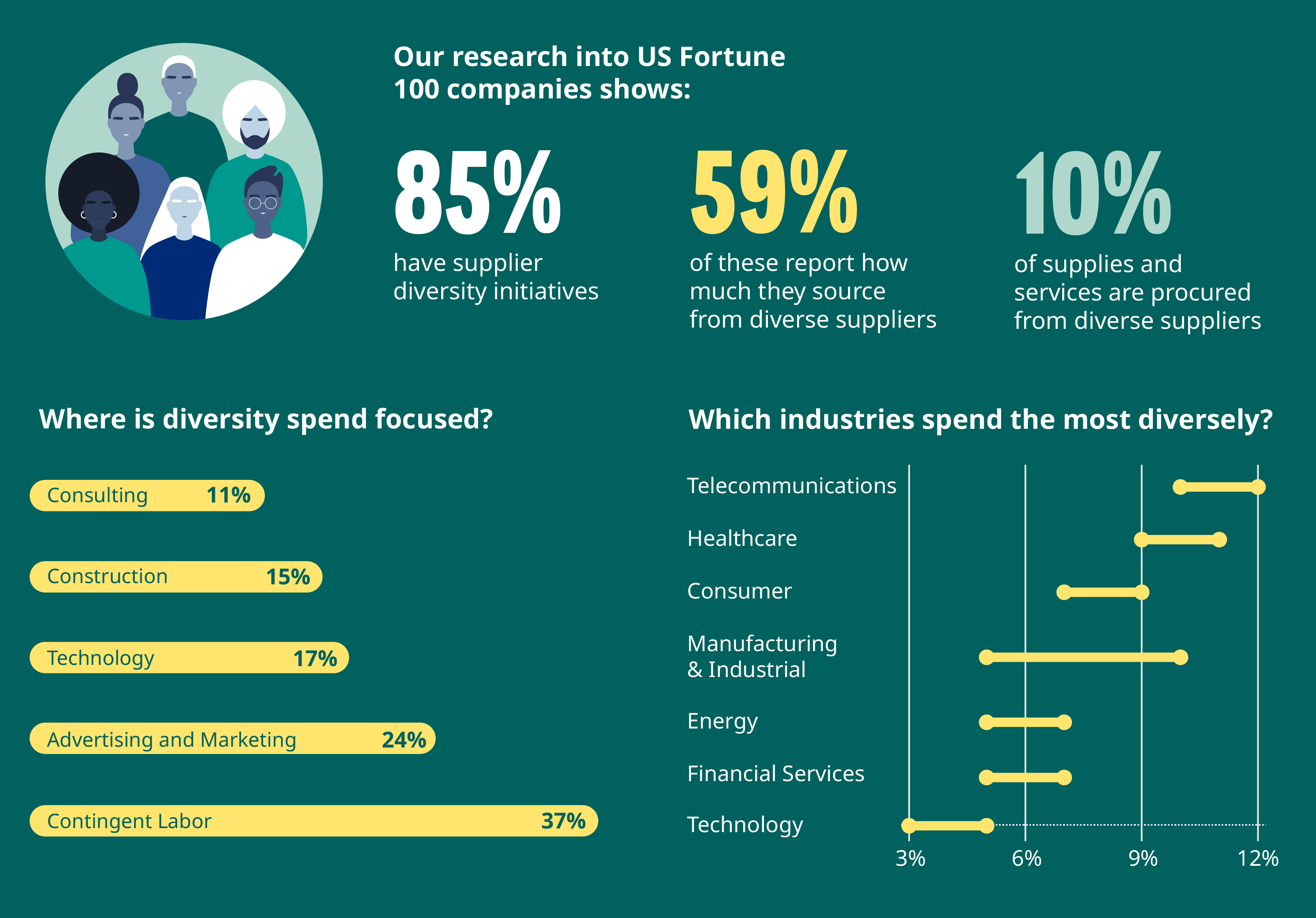Calls for businesses to ramp up their environmental, societal, and governance (ESG) strategy are intensifying from many directions, from customers to employees, to investors, to governments. With the spotlight firmly on sustainability, many business leaders recognize the importance of investing in diverse suppliers, sourcing goods and services from companies owned by minorities, women, veterans, LGBT, people with disabilities, or a small business.
This is not only the right thing to do but can have a positive impact on their growth strategy, making supplier diversity a cornerstone element of companies’ value proposition and brand.
The benefits of having a diverse supplier program are clear. Not only does a diverse supplier base promote innovation through the entrance of new products, services, and solutions, it also encourages healthy competition - on price and service levels - between suppliers. By committing to doing business in diverse markets, it can have a positive impact to the economic growth of all communities, whilst simultaneously boosting corporate revenues.
How successful are supplier diversity programs?
Oliver Wyman teamed up with data analytics provider Proximo to conduct in depth research and interviews with Fortune 100 companies and select international Fortune companies to benchmark supplier diversity program results and reporting. These findings helped us understand what companies can do to build and champion more effective supplier diversity initiatives.
Although many organizations have put in place supplier diversity programs, benchmarking and understanding how well an organization is doing against their competitors can be a complex task. No two firms have the same spending patterns, and these differ by factors such as industry, sub-industry, and geography. Many sectors, such as manufacturing, have global, integrated supply chains and spend a significant amount with their vendors, meaning how well these second-tier suppliers are integrated into supplier diversity programs should also be factored in.

Many organizations appear to be making progress and our studies revealed that 85 percent of companies in the United States have dedicated supplier diversity programs. But despite its importance, only 59 percent of those with a program report supplier diversity spend. Likewise, the average diverse spend percentage among them is ten percent, which is driven by the addressable spend, maturity of the supplier diversity program, and tier two programs (suppliers’ suppliers).
Contingent labor, as well as advertising and marketing, were highlighted as the most common spend categories by the companies we interviewed. This was driven by the high spend in these categories and the awareness of diverse suppliers in this space.
Telecommunications companies lead the industry table when it comes to their percentage spend with diverse suppliers. This could be attributed to the fact that they service an infrastructure that spans the United States, so can more easily partner with a broader range of businesses. Healthcare and pharmaceutical companies also perform well, largely due to their largest customer, namely the US government, having contractual requirements that drive the use of diverse suppliers. We also see strong percentage spend in manufacturing and industrials, particularly within the automotive industry who pioneered supplier diversity initiatives in response to the civil rights movement of the 1960s.
So, what do the most successful supplier diversity programs have in common? From our research, we see five areas where companies can excel at supplier diversity:

1) Set the tone from the top – Endorsed by the CEO and board, and driven by procurement, the value proposition should engage and motivate employees at all levels.
2) Invest in dedicated resources - Upskill your people to progress programs and build supplier relationships, and support initiatives using advanced tools and technology.
3) Expand your diverse supplier network – Proactively expand your diverse supplier groups, using external networks, industry groups, and associations.
4) Set concrete goals – Defining targets drives accountability and makes supplier diversity initiatives twice as likely to succeed.
5) Publicize your progress – Share your commitment to diversity by openly communicating your intentions and results with the outside world.
A more diverse future
Supplier diversity programs are an important way to enhance supply chains and put corporate social responsibility commitments into action. Our research shows that the effort and commitment being put into supplier diversity programs is commendable, but there is still much work to be done. ESG commitments are finally giving organizations an incentive to make positive change. We believe that having the right supplier diversity programs in place will be instrumental in not only helping organizations efficiently and ethically source products and services but will play a key role in recovery and growth.

